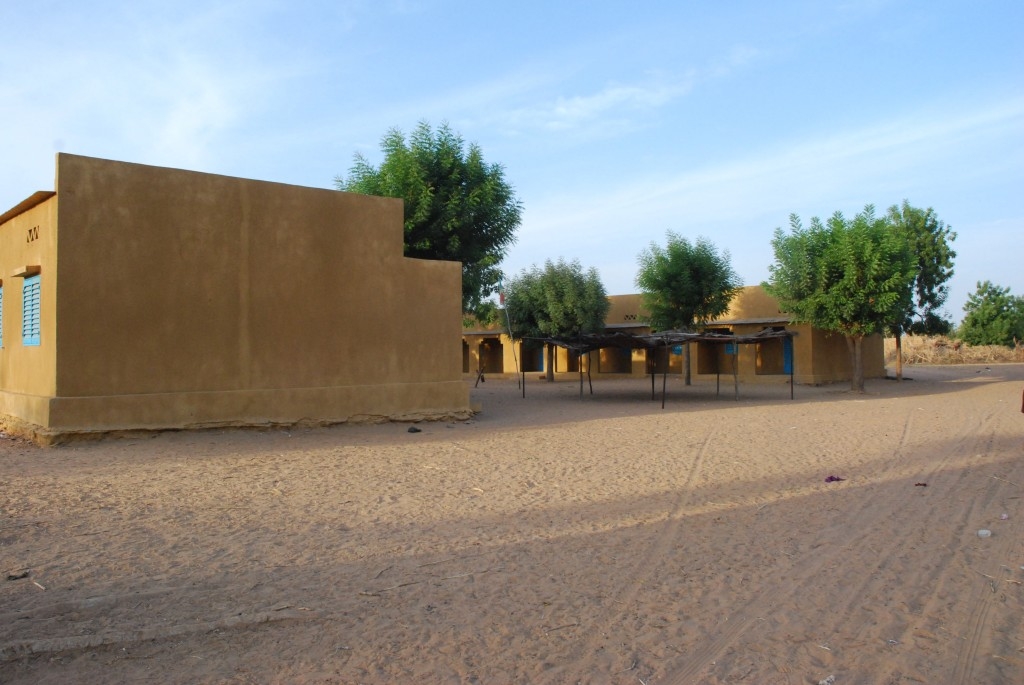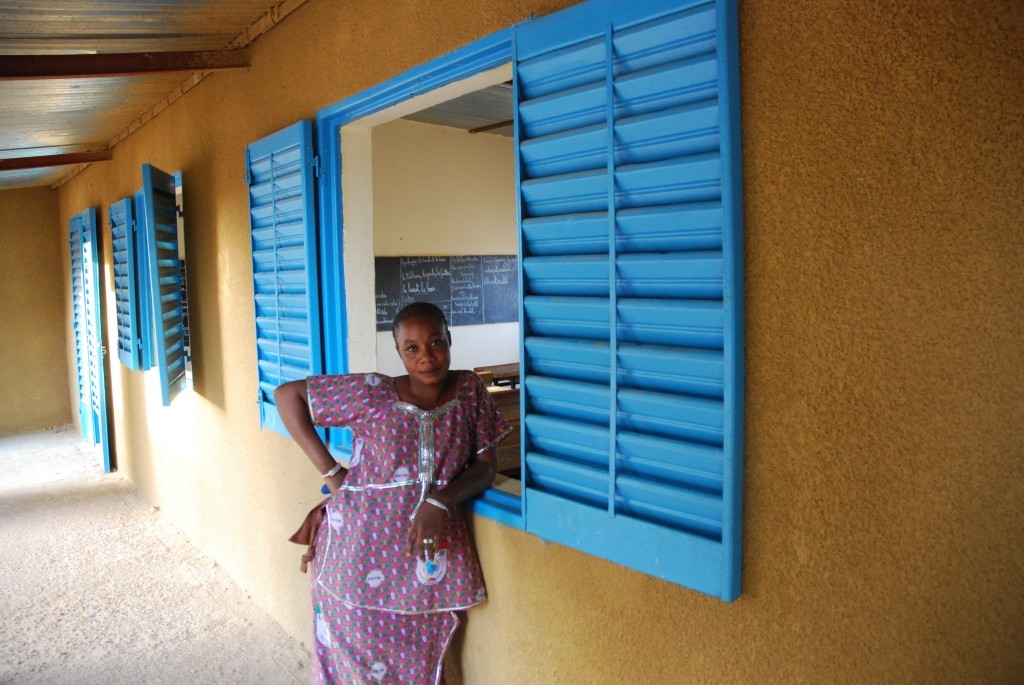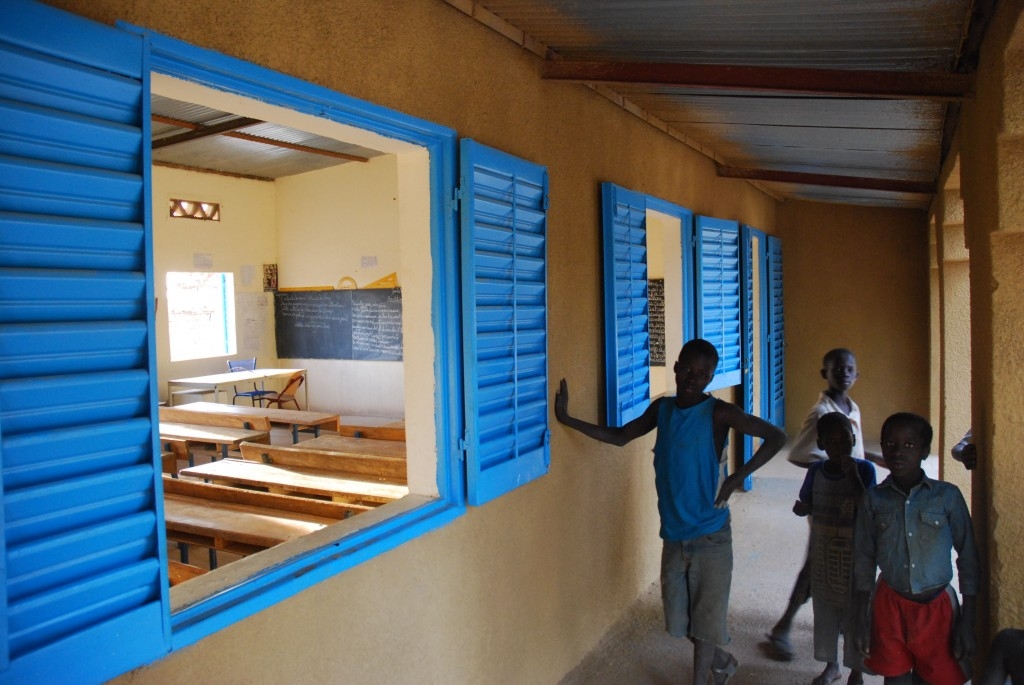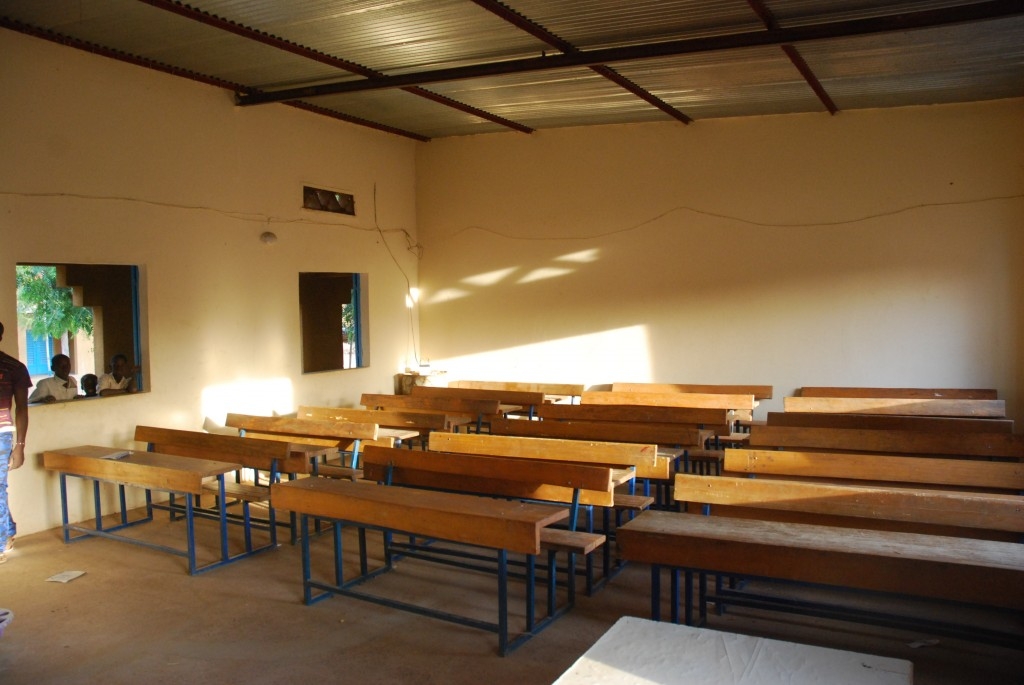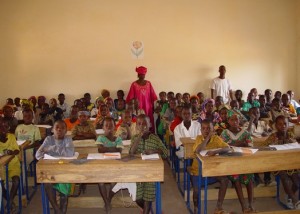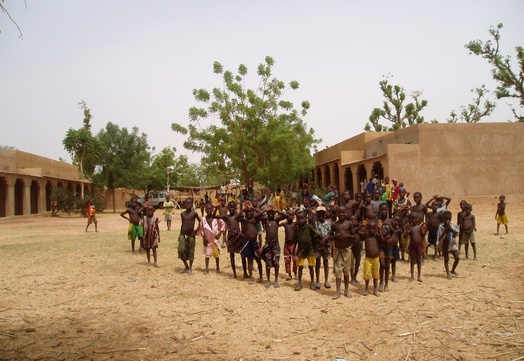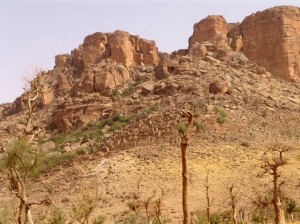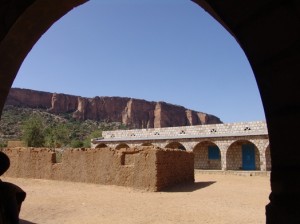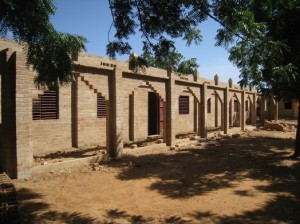
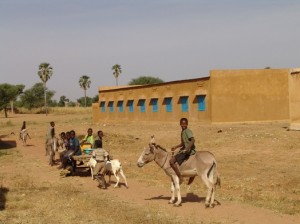
The village of Timissa is situated South-West of the Unesco world heritage area, on top of the highland plateau. This isolated region is influenced by Islam more than any other Dogon-territory and is characterized by the beautiful traditional mosques.
The FDE has realized several projects here, including the renovation of an existing school building, the construction of a new school building, as well as building the necessary teachers’ accommodations and bathrooms. Building this school was made possible by Stichting Bloemendaal Dogon’s financial aid.
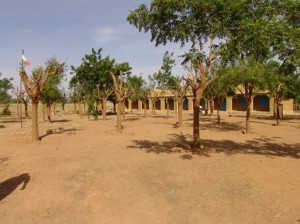
When Joop visited Timissa in March 2004, construction was already in progress. For the renovation of the existing school building, new windows and doors were being installed, new plastering was applied and the roof was being renewed. Additionally, the generator was repaired and some of the mended windows and doors were supplied with a fresh layer of paint. The development of the new building was also on its way: the bricklaying had reached an advanced stage, and steel beams, roofing plates, windows and doors had arrived on site. The new building was finished in June while the renovation lasted a bit longer. After its completion, the school became home to 500 pupils.
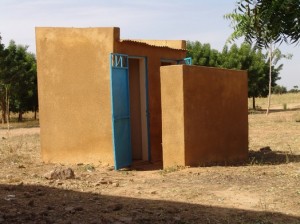
In 2009 a new block with three classrooms was realized in Timissa, executed with the new compressed earth bricks. This school was built as a project together with the schools in Koulou and Yele. Innovative about the new block was that the walls were constituted of two-sided, clean brickwork, which meant that the school did not have to be plastered and painted. Furthermore, the building forms unity with the houses and surrounding landscape due to the color and shape of the bricks. Other notable features are the supporting beams, the concrete headings on the walls, the triangular arcade gates and the new lockable windows.


